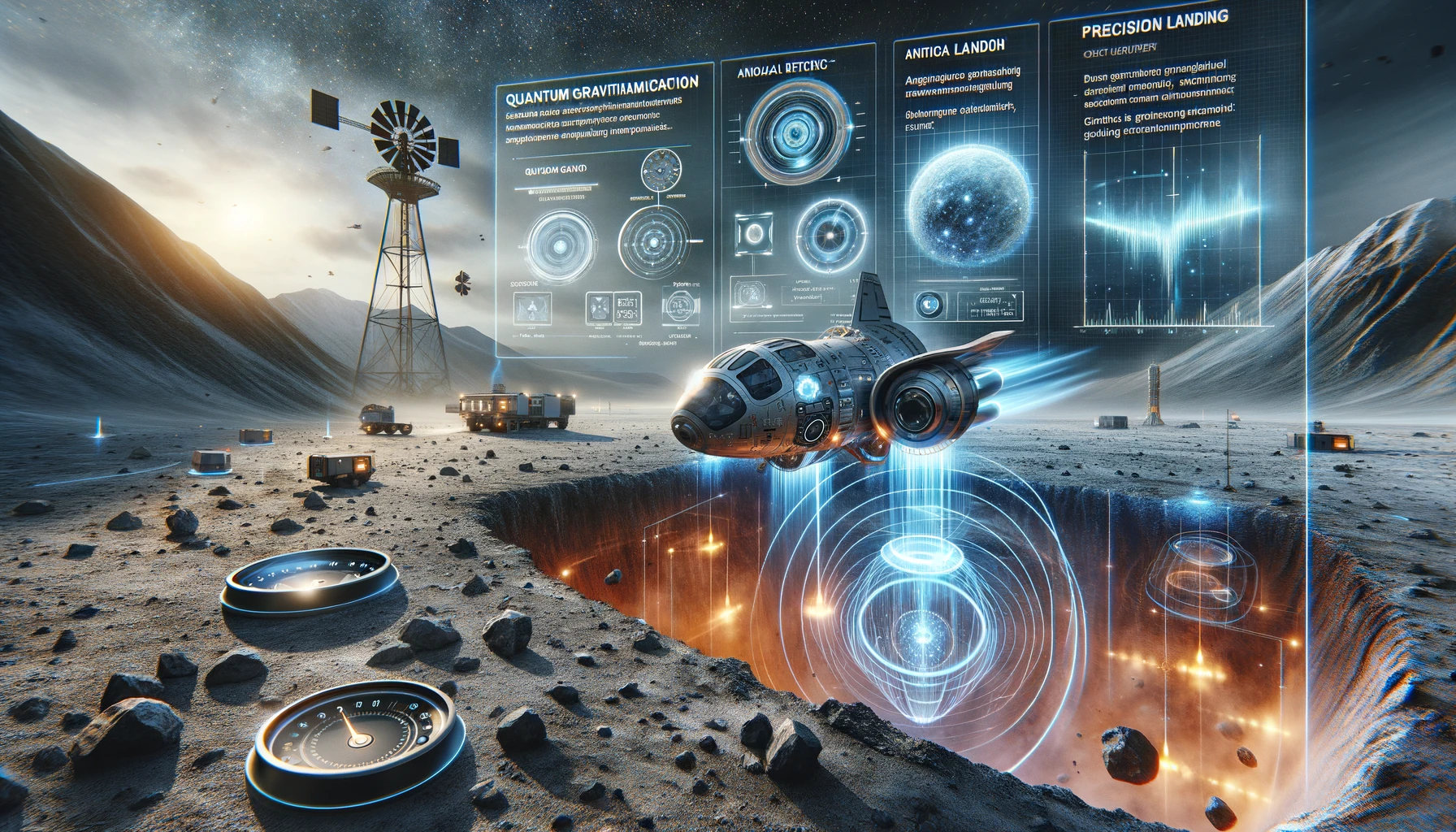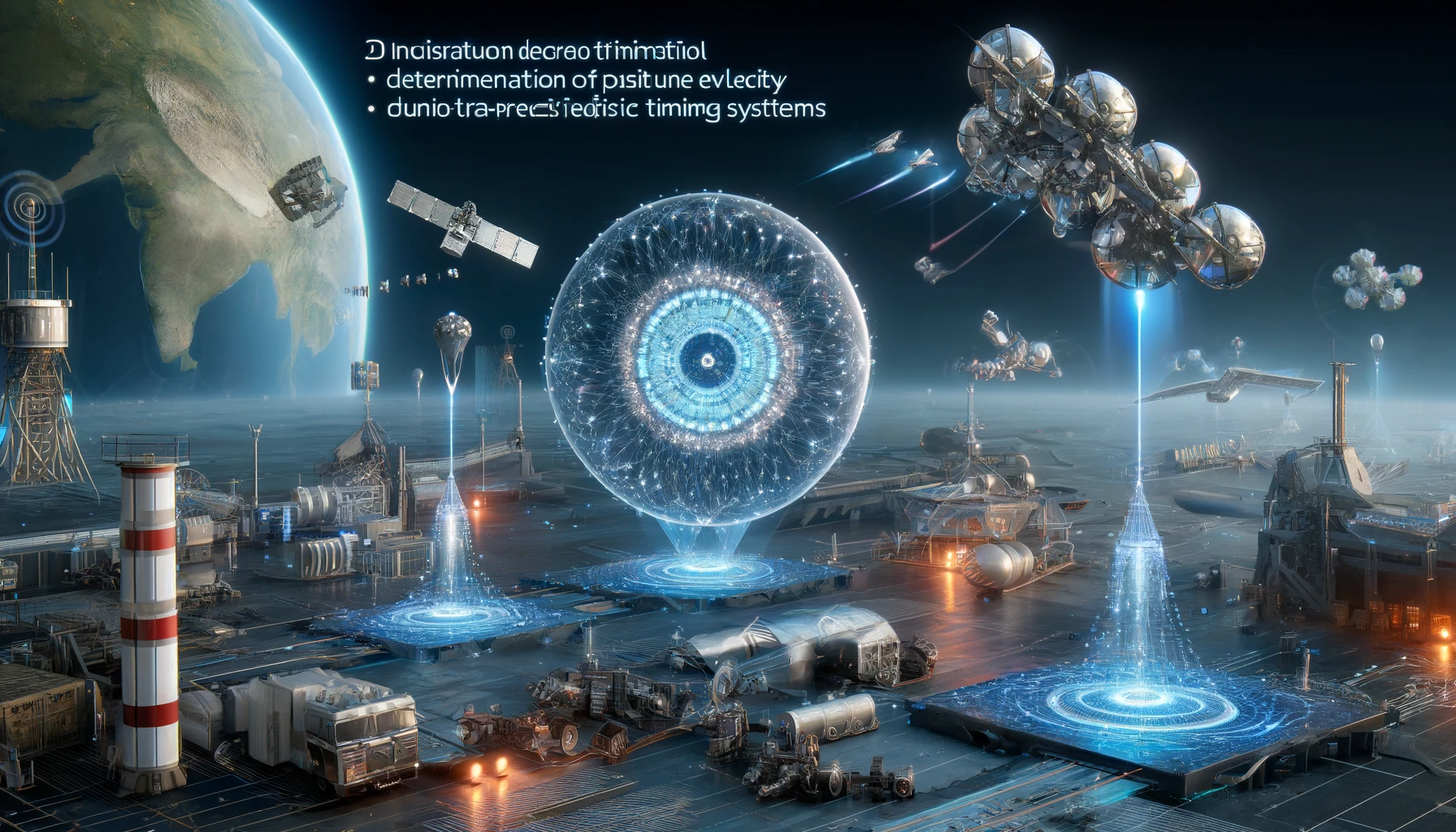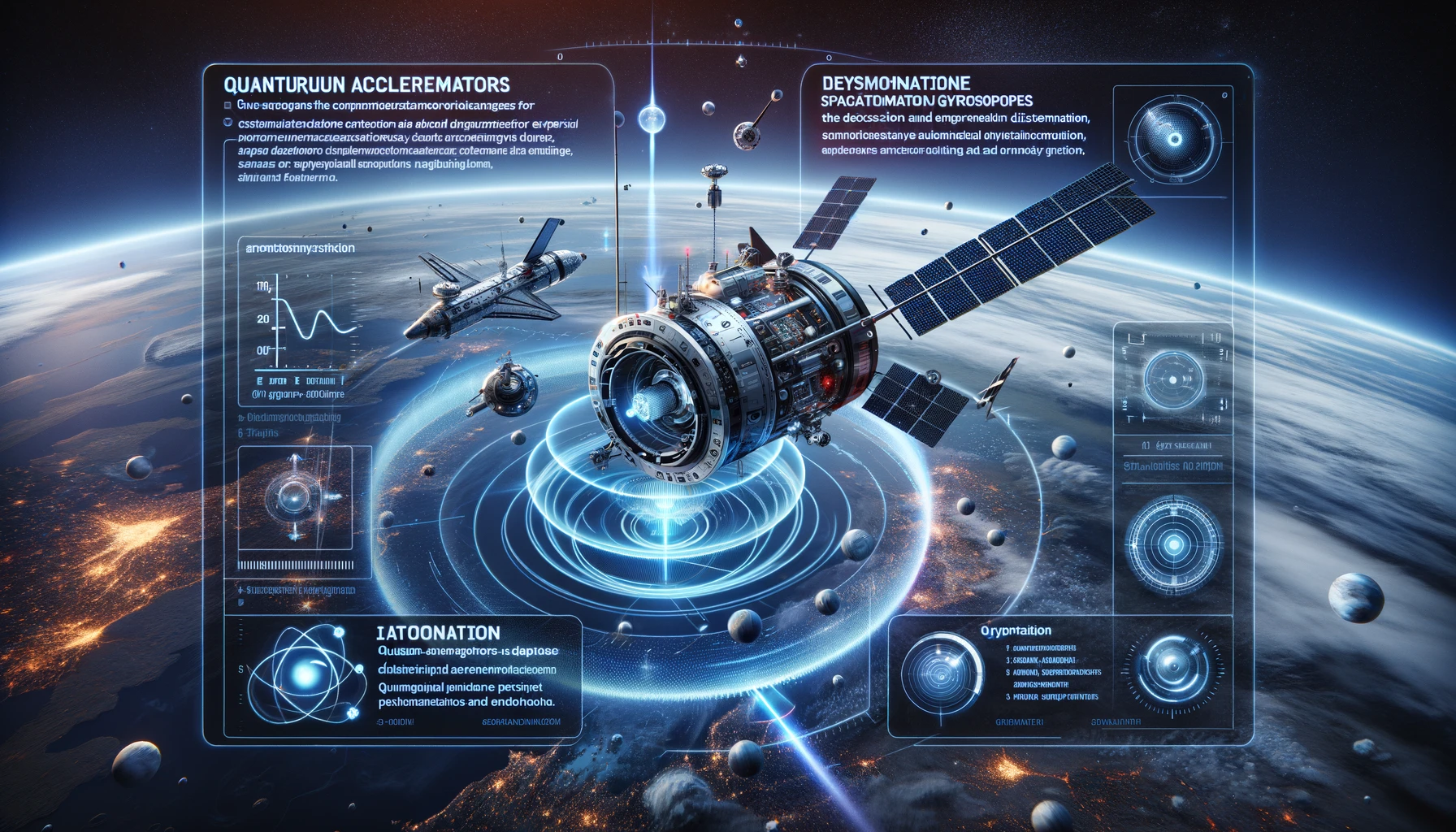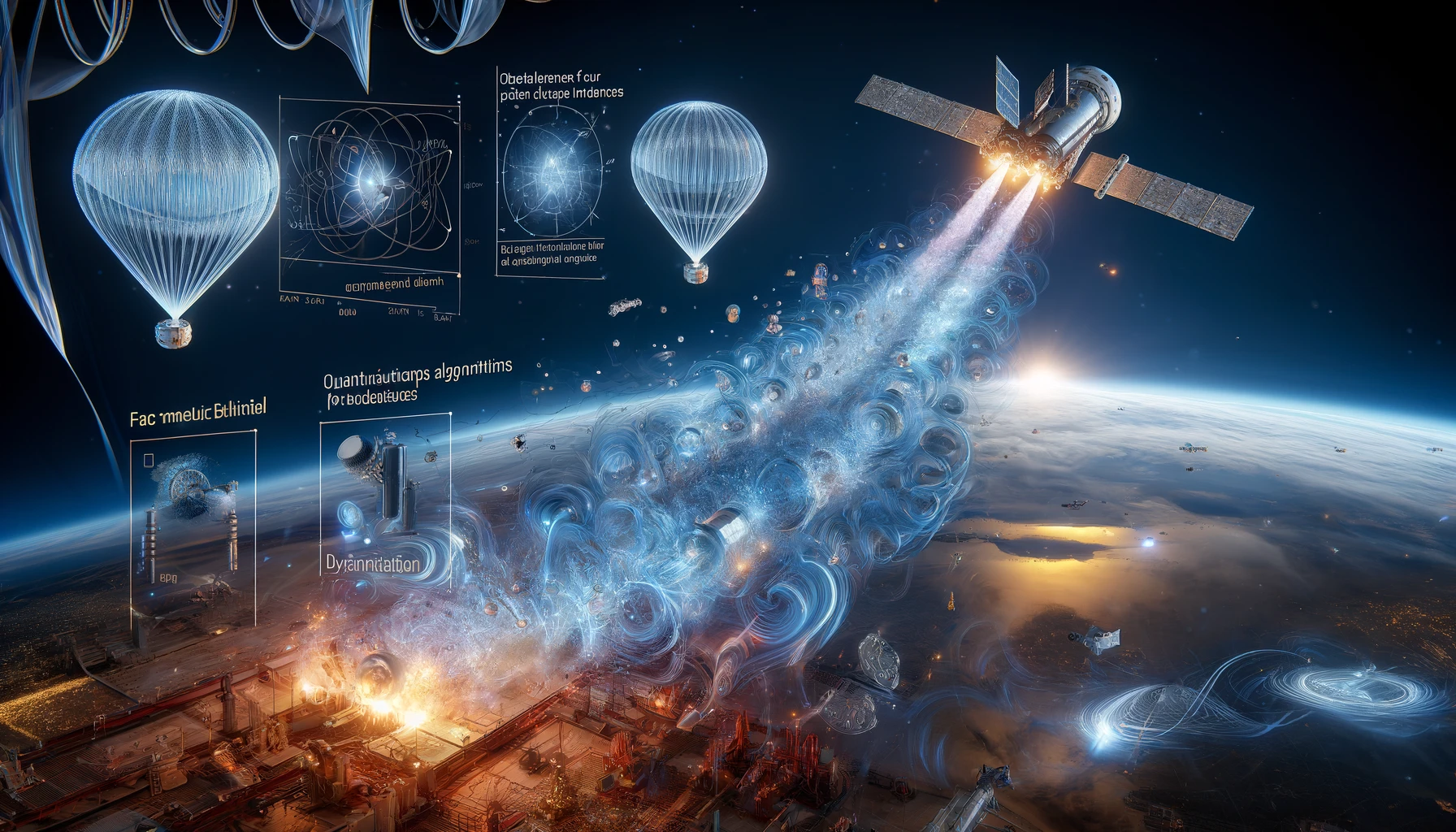
- Published on
- Authors

- Name
- ric de yuga 😄
🌌 The Complexity of Orbital Package Delivery Simulation
Designing and optimizing orbital package delivery systems is an immensely complex task, involving the simulation of various physical phenomena, such as atmospheric re-entry, materials under extreme conditions, and fluid dynamics. Classical computational methods often struggle to accurately model these complex systems, leading to suboptimal designs and increased development costs.
This is where quantum simulation and modeling come into play, offering unprecedented computational capabilities to tackle these challenges head-on.
🚀 Quantum Simulation Algorithms: VQE and PEA
At the forefront of quantum simulation are algorithms such as the Variational Quantum Eigensolver (VQE) and the Quantum Phase Estimation Algorithm (PEA). These algorithms leverage the unique properties of quantum systems to efficiently simulate complex physical phenomena.
Variational Quantum Eigensolver (VQE)
The VQE algorithm is a hybrid quantum-classical approach that combines the power of quantum computers with classical optimization techniques. It is particularly well-suited for simulating the ground state properties of complex molecules and materials.
In the context of orbital package delivery, VQE can be employed to:
- Model the behavior of materials under extreme conditions, such as high temperatures and pressures experienced during atmospheric re-entry
- Optimize the design of heat shields, ablative materials, and thermal protection systems
- Simulate the chemical reactions and degradation processes that occur in materials during flight
By accurately simulating these phenomena at the quantum level, VQE enables the design of more efficient and resilient components for orbital package delivery vehicles.
Quantum Phase Estimation Algorithm (PEA)
The PEA is another powerful quantum simulation algorithm that allows for the precise estimation of the eigenvalues and eigenstates of a quantum system. It is particularly useful for simulating the time evolution of complex physical systems.
In orbital package delivery, PEA can be applied to:
- Model the fluid dynamics of atmospheric re-entry, including turbulence, shock waves, and heat transfer
- Simulate the deployment and performance of parachutes and deceleration systems
- Optimize the aerodynamic properties of delivery vehicles, reducing drag and improving stability
By leveraging PEA, designers can gain deeper insights into the complex physics of orbital flight, enabling the development of more efficient and reliable delivery systems.

🌐 Hybrid Quantum-Classical Approaches
While quantum computers excel at simulating complex physical systems, they are not yet capable of handling the entire simulation workflow on their own. This is where hybrid quantum-classical approaches come into play, leveraging the strengths of both quantum and classical computation.
In a hybrid approach, the most computationally intensive tasks, such as solving the Schrödinger equation for a complex molecule, are offloaded to quantum processors. Classical computers then handle the overall simulation workflow, including pre- and post-processing steps, as well as the integration of quantum results into the larger simulation framework.
This hybrid approach allows for the seamless integration of quantum simulations into existing computational pipelines, enabling the simulation of larger and more complex systems than what is possible with quantum computers alone.

🔢 Quantum Linear System Algorithms
Another area where quantum computers can significantly accelerate simulations is in solving linear systems of equations. Many physics-based models, such as those describing fluid dynamics or structural mechanics, ultimately reduce to solving large systems of linear equations.
The Harrow-Hassidim-Lloyd (HHL) algorithm is a quantum algorithm that can solve certain linear systems exponentially faster than classical methods. By incorporating HHL into simulation workflows, quantum computers can greatly speed up the solution of complex physics-based models.
In the context of orbital package delivery, HHL can be applied to:
- Accelerate computational fluid dynamics (CFD) simulations of atmospheric re-entry and descent
- Solve large-scale structural mechanics problems, such as those involved in the design of delivery vehicle airframes and components
- Optimize trajectories and control systems by solving complex optimization problems
By leveraging quantum linear system algorithms, simulations that would take days or weeks on classical computers can potentially be completed in a matter of hours, greatly accelerating the design and optimization process.

🔮 The Future of Quantum Simulation in Orbital Package Delivery
As quantum computers continue to increase in scale and performance, their impact on simulation and modeling in the orbital package delivery industry will only grow. In the coming years, we can expect to see even more advanced quantum simulation algorithms and hybrid approaches that push the boundaries of what is possible.
Some potential future applications include:
- Multi-physics simulations that seamlessly integrate quantum chemistry, fluid dynamics, and structural mechanics
- Real-time simulations that leverage quantum computing to make on-the-fly design optimizations during flight
- Quantum machine learning algorithms that can identify optimal designs and control strategies from vast datasets
By embracing the power of quantum simulation and modeling, the orbital package delivery industry can unlock new frontiers in vehicle design, materials science, and flight optimization, paving the way for a more efficient, sustainable, and cost-effective future of space logistics.

🚀 Conclusion
Quantum simulation and modeling technologies are set to revolutionize the orbital package delivery industry, enabling the design and optimization of systems that were once thought impossible. By leveraging the power of quantum algorithms, hybrid approaches, and linear system solvers, engineers and scientists can tackle the most complex challenges in atmospheric re-entry, materials science, and flight dynamics.
As the orbital package delivery industry continues to grow and mature, the adoption of quantum simulation and modeling will become increasingly critical to maintaining a competitive edge. Those who embrace these cutting-edge technologies will be well-positioned to lead the charge into a new era of space logistics, one defined by unparalleled efficiency, safety, and innovation.
